EDIE HOLLAND ︎ CONTEXT ︎ UNIT 3
INITIAL PLANS

FURTHER READING
(EXPLORING THE MIND)
Gabor Maté’s Scattered Minds (2022) offered language for experiences I had always struggled to explain. He describes ADHD as more than a difficulty with focus, suggesting it is a different way of sensing time, emotion and attention. That perspective helped me see my restlessness and shifting focus as rhythms that could shape my way of making. It encouraged me to embrace the layered, intuitive nature of collage, film and clay as reflections of how attention moves and changes.
I also explored Maurice Merleau-Ponty’s Phenomenology of Perception (1962), which deepened my understanding of how the body shapes perception. He described touch as a way of thinking through the world, an idea I connect to through working with clay. The material responds directly to pressure, care and hesitation, recording each gesture as a trace of presence. Its transformation from soft and pliable to fragile and brittle mirrors the shifts within my own emotional state. Clay feels like an honest language for expressing that instability, which is why it became central to this body of work.Reading both Maté and Merleau-Ponty helped me understand that my practice is ultimately about perception, and how making can be both a form of understanding and healing.
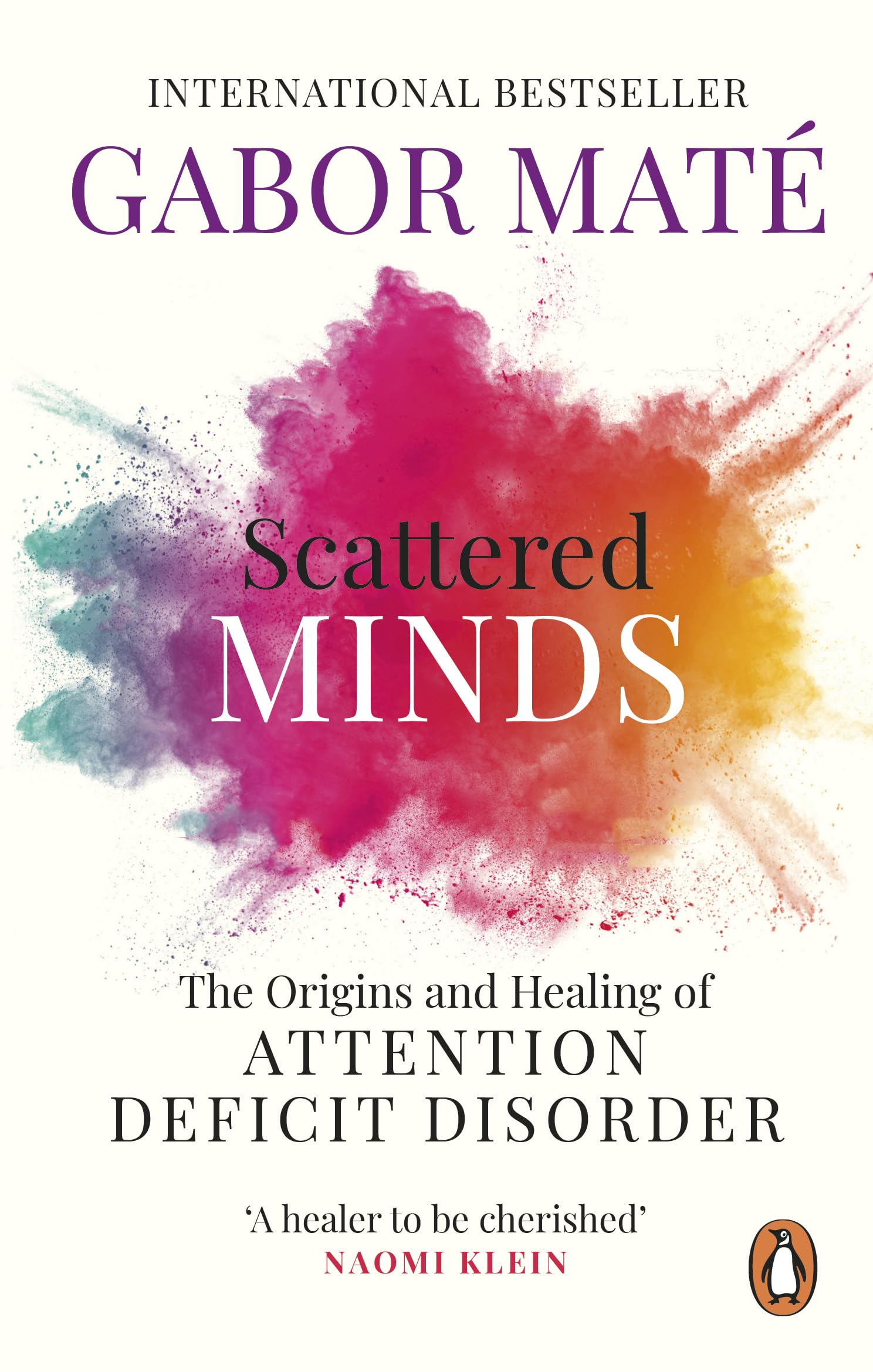
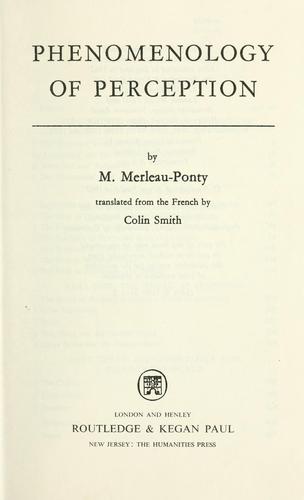
VISION BOARDS
It was difficult to begin the process initially, but I started by making a moodboard with the colours, textures and ideas I wanted to explore. It includes photos from William Eggleston, Wolfgang Tillmans, Viviane Sassen, Francessca Woodman, Nan Goldin and Nadia Lee Cohen, as well as some vintage cutouts and clips from toiletpaper magazine who are known for their bright, vivid and curious aesthetic. Once I built a rough idea of the vision, I could start further researching.


ARTISTS, INFLUENCES & MOVEMENTS
VIVIANE SASSEN
“I feel like I’m always solving little puzzles or making combinations,” she explains. “It’s very simple really. I would bring a few elements together and experiment. It’s all just trial and error. I’m always looking for that little bit of magic.” (2018 Interview for British Journal of Photography)
I was drawn to her 2014 Axiom series because of the way she works with light, shadow and the body to create shapes that feel both real and abstract. The figures in these photographs are often partially obscured or flattened by shadow, which makes the body feel unfamiliar. I like how Sassen uses simple gestures and strong contrasts to shift how we see a person, turning something ordinary into something strange or dreamlike.
There is a sense of play in the work too. The compositions feel experimental, like they are the result of trying things out rather than following a fixed plan. This connects to how I work with collage and clay, where chance and touch guide the outcome. The way she allows the body to slip between presence and absence is something that resonates with the emotional tone of my own work.

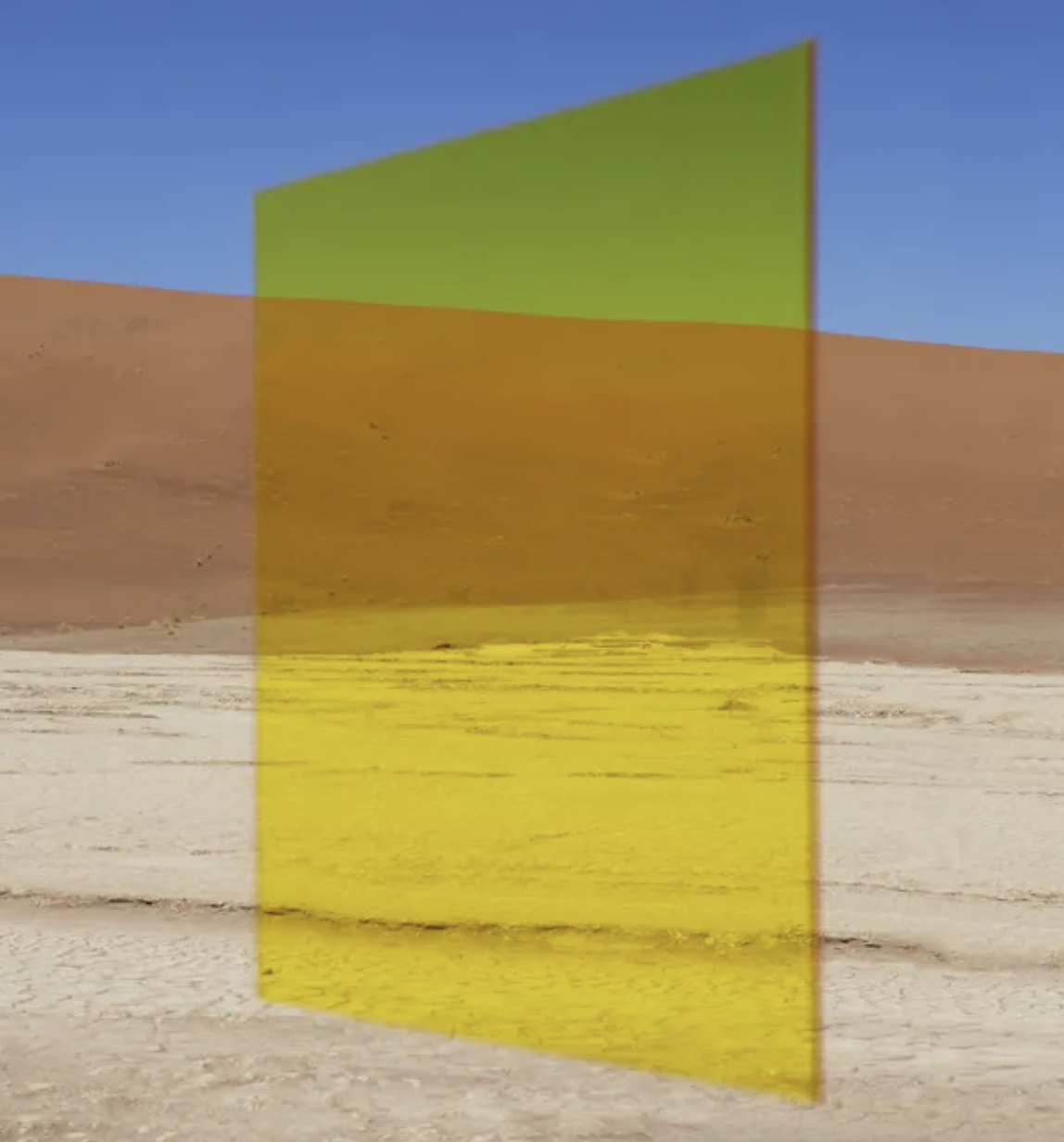

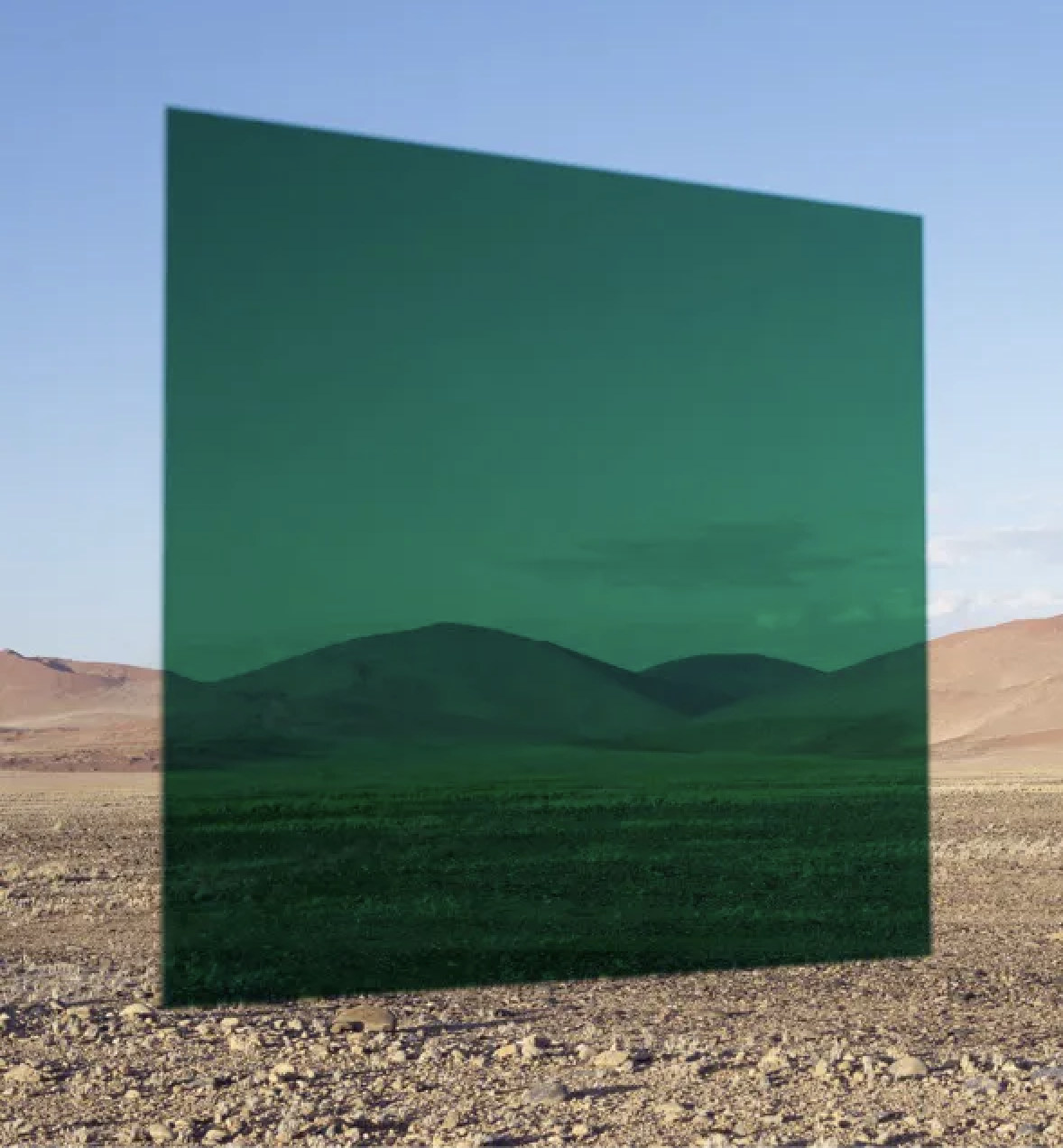

Above: Viviane Sassens 2014 photographic series AXIOM
FRANCESSCA WOODMAN
It was important that beyond the visual, I explored some artists that conceptually related to my work. Even though her work looks quite different from mine, the connection lies in the shared translation of psychological and emotional states into material, tactile, and visual form, which links with my clay, gesture, and the idea of touch as perception. Woodmans intimate self-portraits express a blurred sense of identity and self-perception. Her work feels like a visual translation of internal states, much like this project set in stone.
![]() House series (1976)
House series (1976)
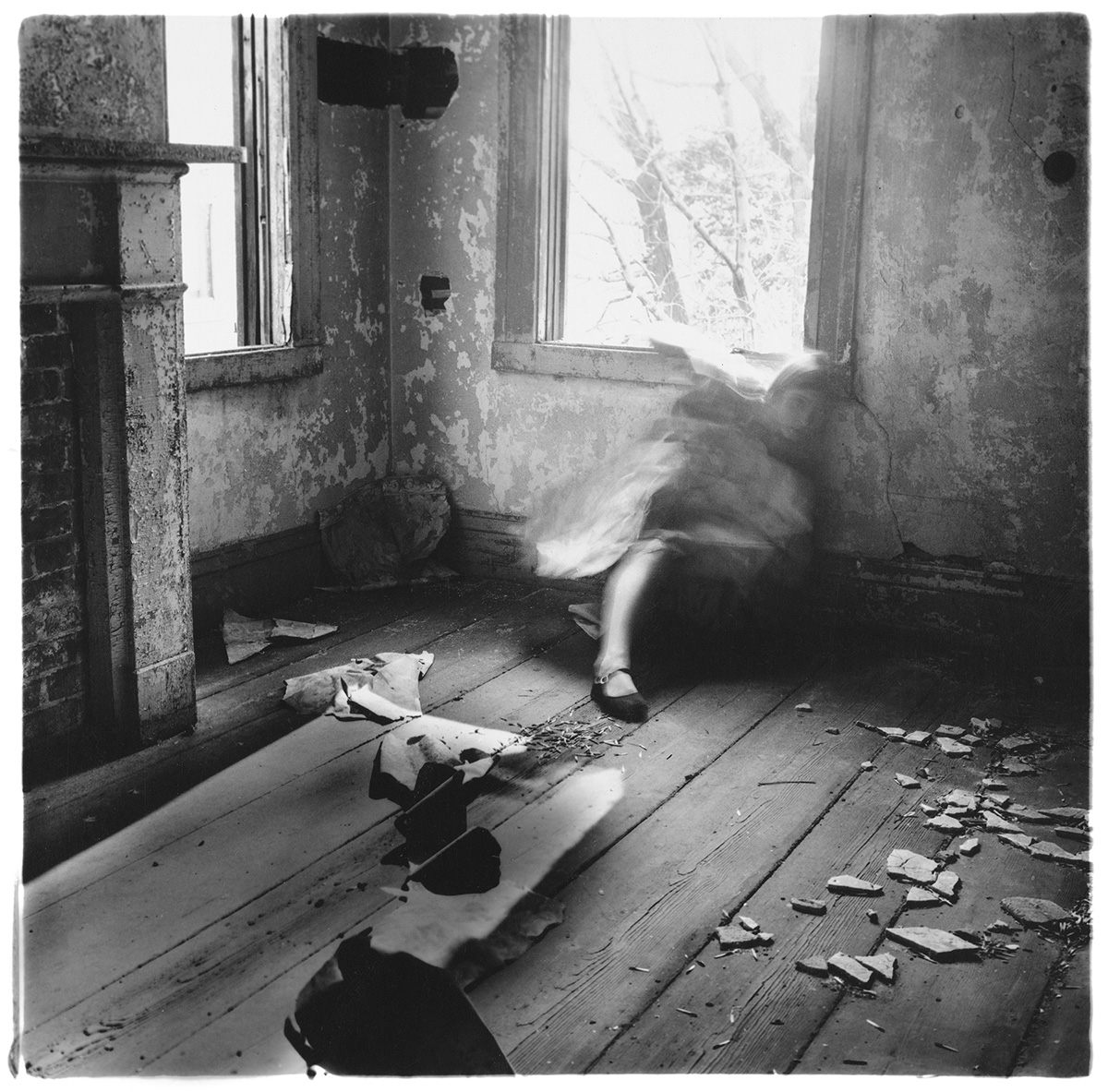 House series (1976)
House series (1976)

Untitled, Providence, Rhode Island (1975)
I really like the way her body almost fades into the wall in both of these images, as if she’s becoming part of the space. It reminds me of the moments when I feel disconnected or caught between presence and absence, which I try to express through the surface of clay. The soft edges and movement in her images feel similar to how clay holds the memory of touch, like both are trying to capture something that can’t fully stay still.
The DADA MOVEMENT
When I was exploring collaging and the process behind it, I looked to the Dada movement for inspiration. It began around 1916 as a reaction to the chaos and confusion of the world. I was really drawn to this movement for that reason, it was a way of artists processing the world around them and the feelings that come with it, into art. It felt like a permission slip to use my art as a way to process
Artists like Hannah Höch and Raoul Hausmann rejected logic and tradition, choosing instead to work with chance, play and irrationality. They cut up newspapers, rearranged photographs and used found materials to make sense of a time that felt completely unstable. What I find inspiring is how they turned fragmentation into a creative force. Cutting and reassembling became a way of rebuilding meaning from what was broken, which I really relate to in my own process. When I’m working with clay or collage, there’s always an element of unpredictability, and I’ve learned to accept that rather than fight it, it actually becomes part of the beauty of it. Sometimes an image rips or a glaze fires differently to how I imagined, but those moments often lead to something more honest. Like the Dada artists, I see chaos as part of the work rather than a mistake.

Raoul Hausmann, A Bourgeois Precision Brain Incites a World Movement (1920)

Raoul Hausman, The Art Critic (1919–20)
Höch drew inspiration from the collage work of Pablo Picasso and fellow Dada exponent Kurt Schwitters, and her own compositions share with those artists a similarly dynamic and layered style. Höch preferred metaphoric imagery to the more direct, text-based confrontational approach of her contemporary John Heartfield, whose work she found 'tendentious.

Georg Scholz, Bauernbild (1920)

Hannah Höch, Cut with the Kitchen Knife (1919-1920)
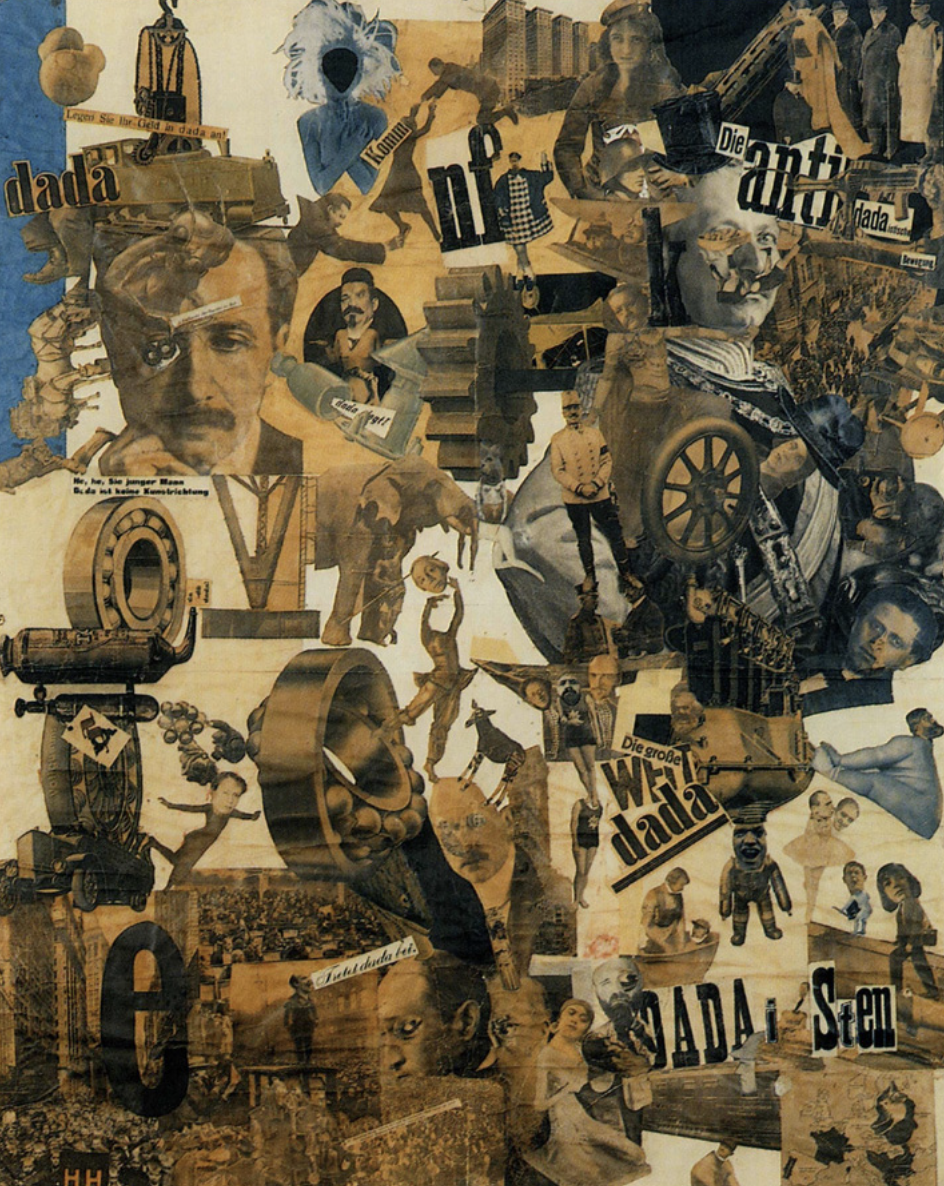
Hannah Höch, Cut with the Kitchen Knife through the Last Weimar Beer-Belly Cultural Epoch in Germany (1919)
Photography, clay and collage all have a mix of control and accident. A photo captures a moment that can’t be repeated, and clay keeps every mark or slip of the hand. I like that same feeling in collage. Looking at Hannah Höch’s Cut with the Kitchen Knife (1919), I’m drawn to how she builds meaning out of fragments. When I cut and layer images, it feels like a way of piecing together thoughts and emotions that don’t always fit neatly.
Kensuke Koike
I wanted to explore some collage artists to open my mind into the ways an entirely new image and idea can be made using only one image, or sometimes combining two. His practice is centred around a philosophy of ‘no more, no less’ exploring the possibilities of creating a new image made up only of itself. Using found objects in this way creates a more dynamic way of working, as although he experiments with many prototypes initially, there is only one chance to work with the original photograph.
![]()
![]()
Exploring this work made me think more deeply about how I could bring texture and physicality into my collages. I began experimenting with ripping, layering and cutting paper from vintage magazines, combining them with fragments of my own 35mm photographs. This process felt instinctive and slightly unpredictable, which I think reflects the way my mind moves between thoughts. Like the artists of the Dada movement, I was drawn to collage as a rejection of order and logic. There is something freeing about working with imperfection and chance, allowing images to come together in unexpected ways. These textured, handmade collages became an important step in understanding how touch and disruption could echo the same emotional rhythms found in my ceramic work.
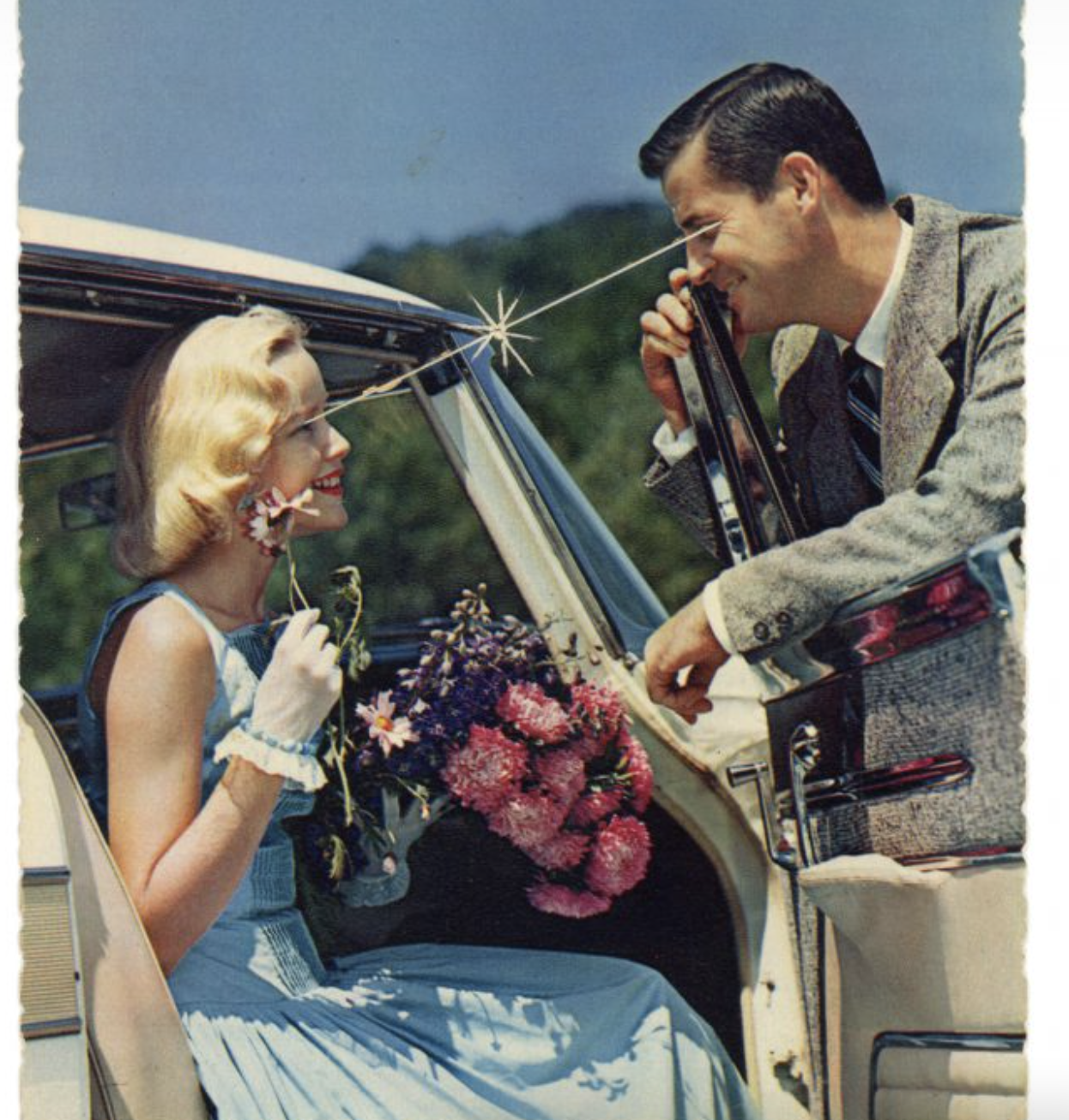
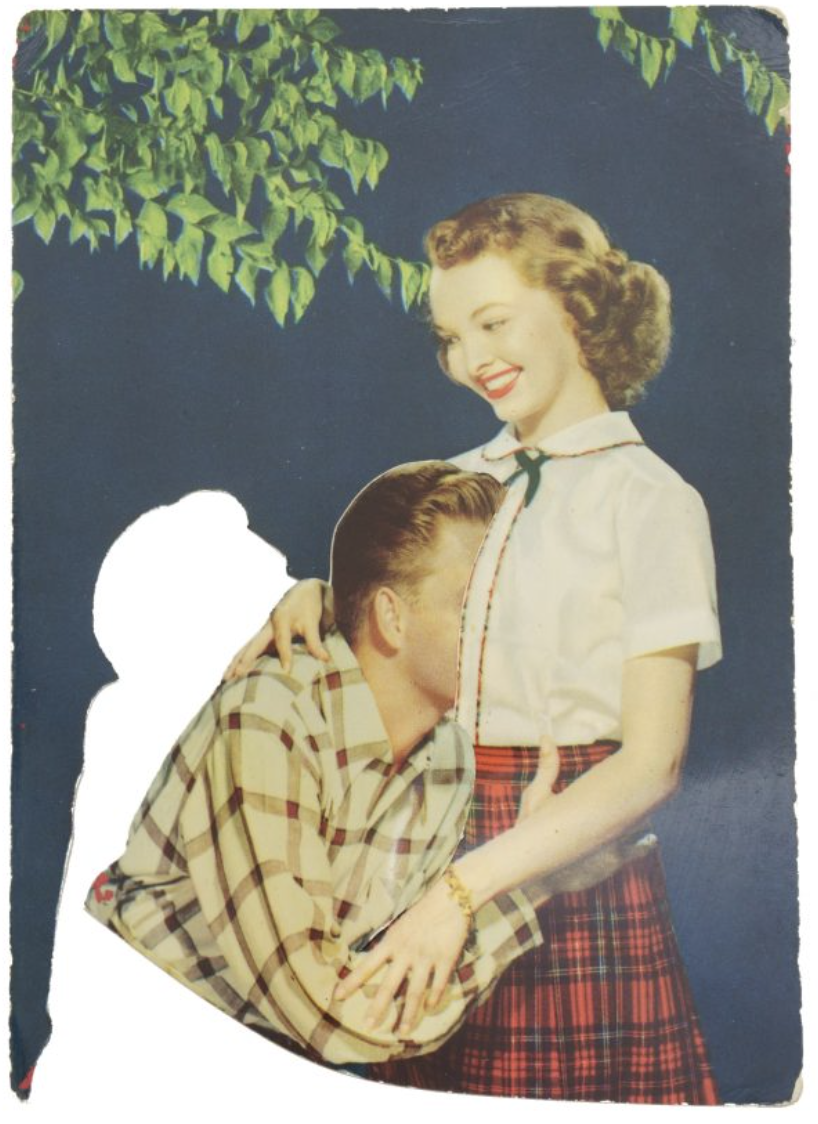
Exploring this work made me think more deeply about how I could bring texture and physicality into my collages. I began experimenting with ripping, layering and cutting paper from vintage magazines, combining them with fragments of my own 35mm photographs. This process felt instinctive and slightly unpredictable, which I think reflects the way my mind moves between thoughts. Like the artists of the Dada movement, I was drawn to collage as a rejection of order and logic. There is something freeing about working with imperfection and chance, allowing images to come together in unexpected ways. These textured, handmade collages became an important step in understanding how touch and disruption could echo the same emotional rhythms found in my ceramic work.
Collage Experiments / Response to Kensuke Koike
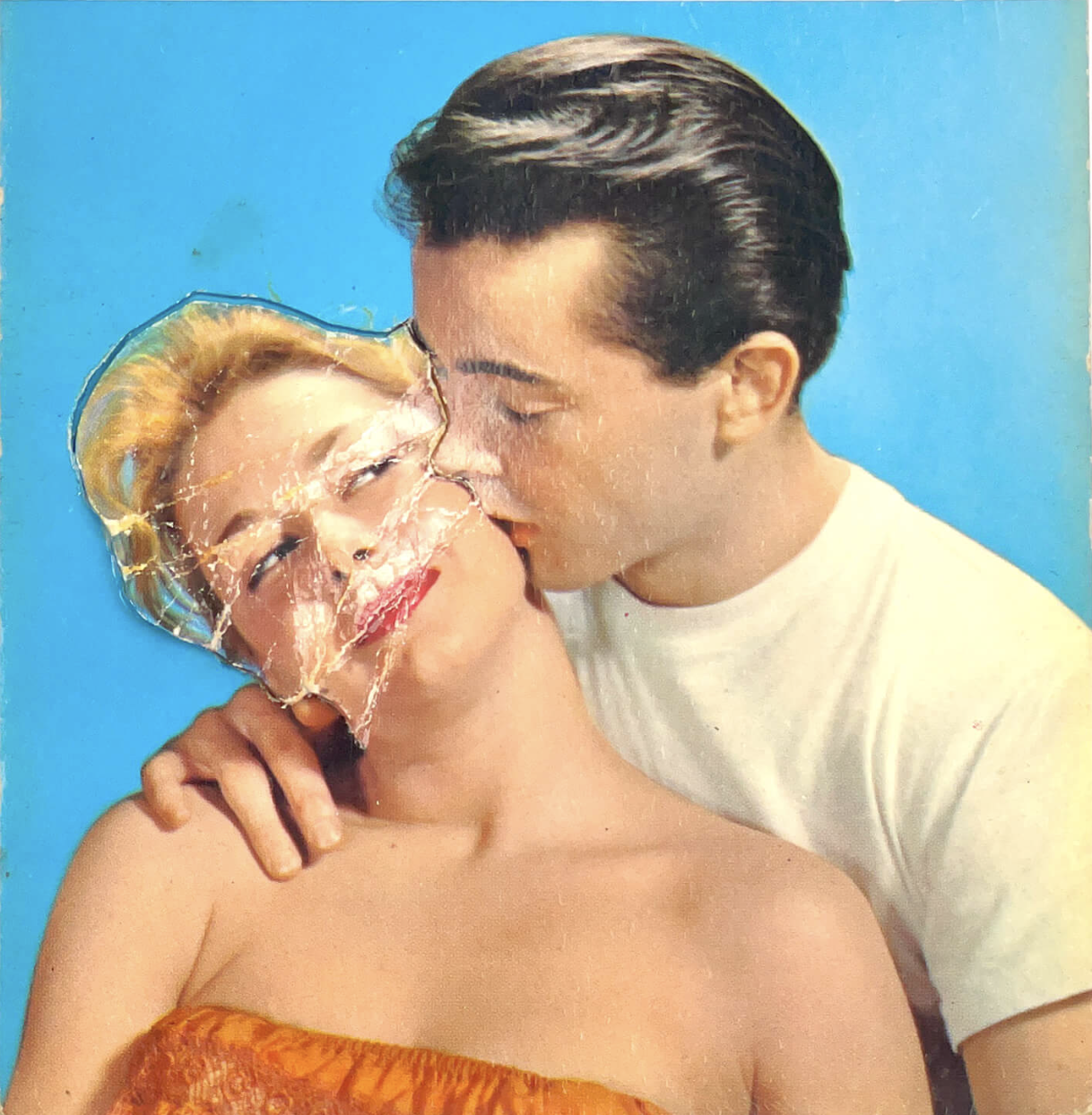
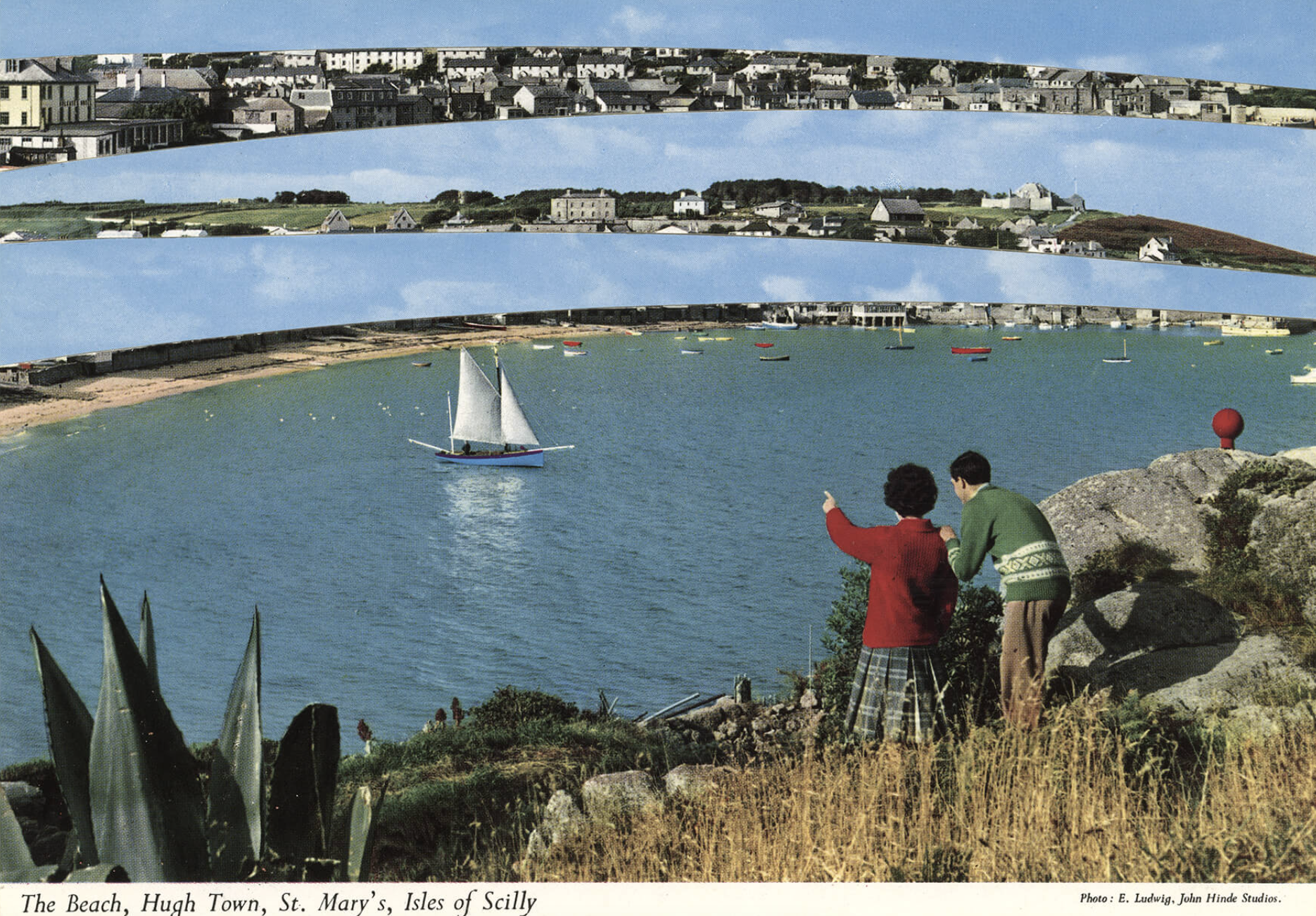
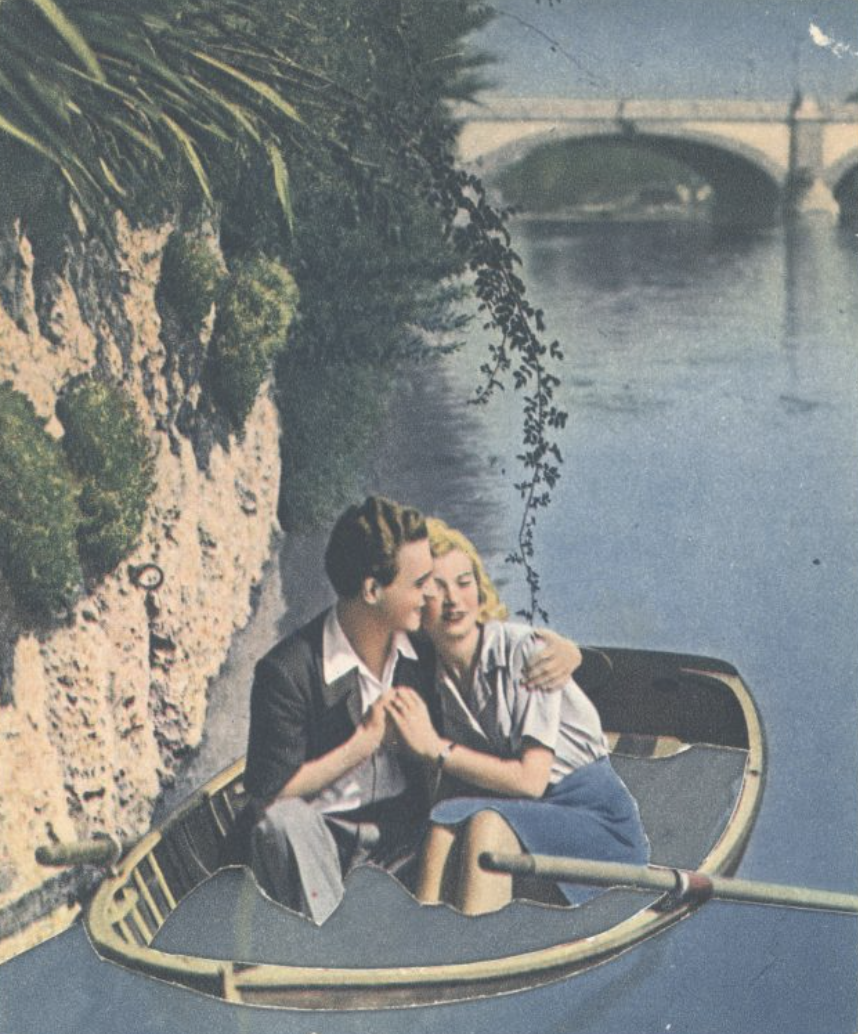
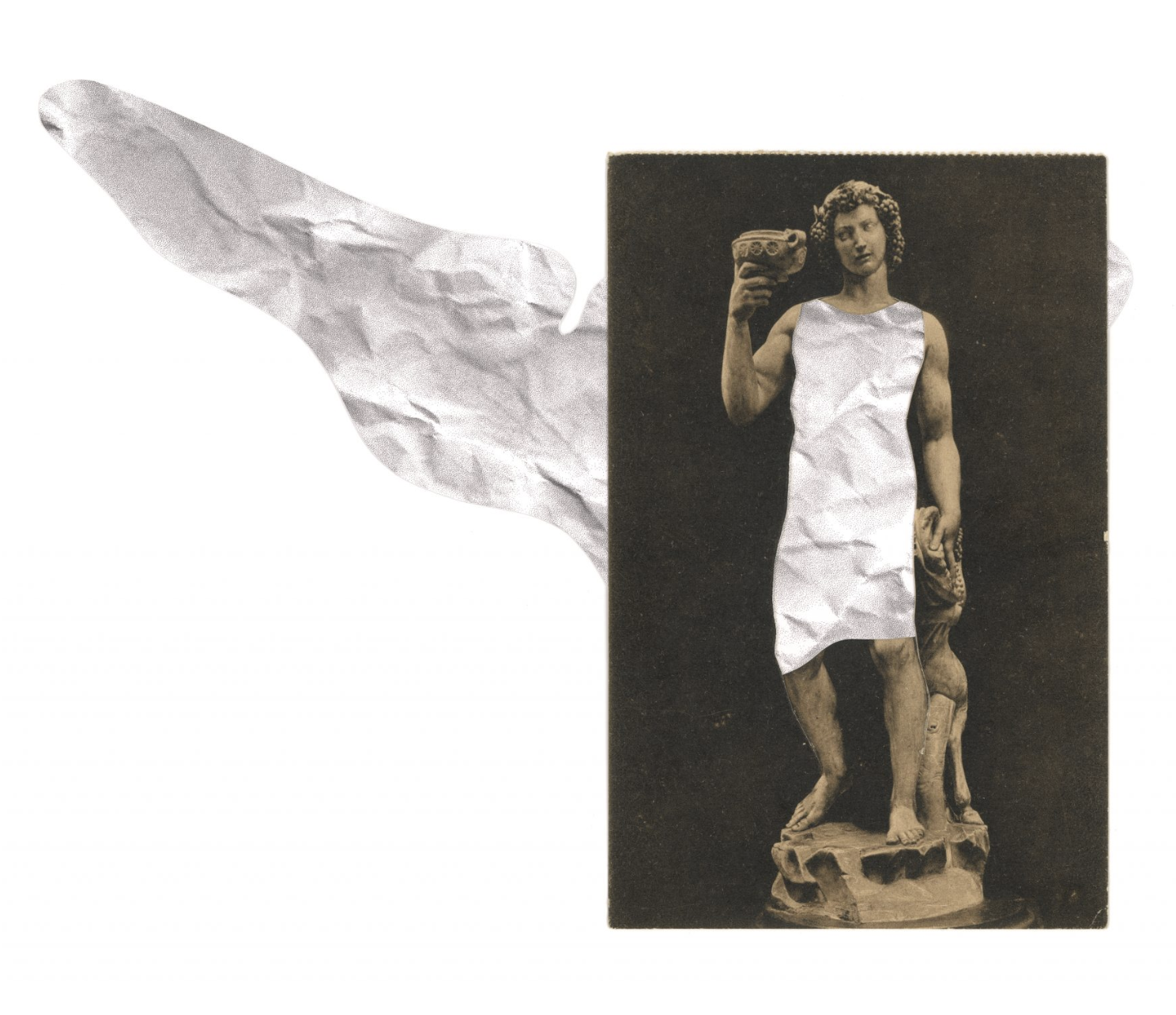
Kensuke Koike
Various works from Single Image Processing (postcard collages), 2018–ongoing
Found vintage postcard, cut and reassemble
These collages were made while looking at Kensuke Koike’s visual language. Rather than following his rule of using only a single image, I responded to the way he cuts, rearranges and shifts familiar pictures. I combined my own film photos with found imagery to experiment more intuitively with composition, texture and mood.

TENDERED, Karimah Ashadu (2025)
︎CAMDEN ARTS CENTRE, LONDON
In her exhibition Tendered at Camden Art Centre, Karimah Ashadu opens up moving-image and sculptural installation to interrogate the body, material and memory. It made me think about how moving image can interact with objects rather than just being projected onto a flat surface. In my installation, the video sits on a circular ceramic tile so the texture and shape of the clay slightly change the image as it moves. This gives the projection a more tactile and unsettled quality, almost like the surface and the image are in conversation with each other.


I also explored how the projection could sit within the space. I introduced a gentle texture to the ceramic so the light would catch and shift across the surface rather than remaining flat. At first, I tried letting the video spill outside the circular tile, but containing it within the round shape created a more focused point of attention. It gave the image a sense of being held, almost like looking into a small window or viewfinder.

Final iteration of Set in Stone projection



The projection settles differently across the glaze, catching light in small waves. The colours shift and soften as the camera moves, making the image feel like it’s floating on the surface. I love how each still of the moving image creates a new feeling and colour.
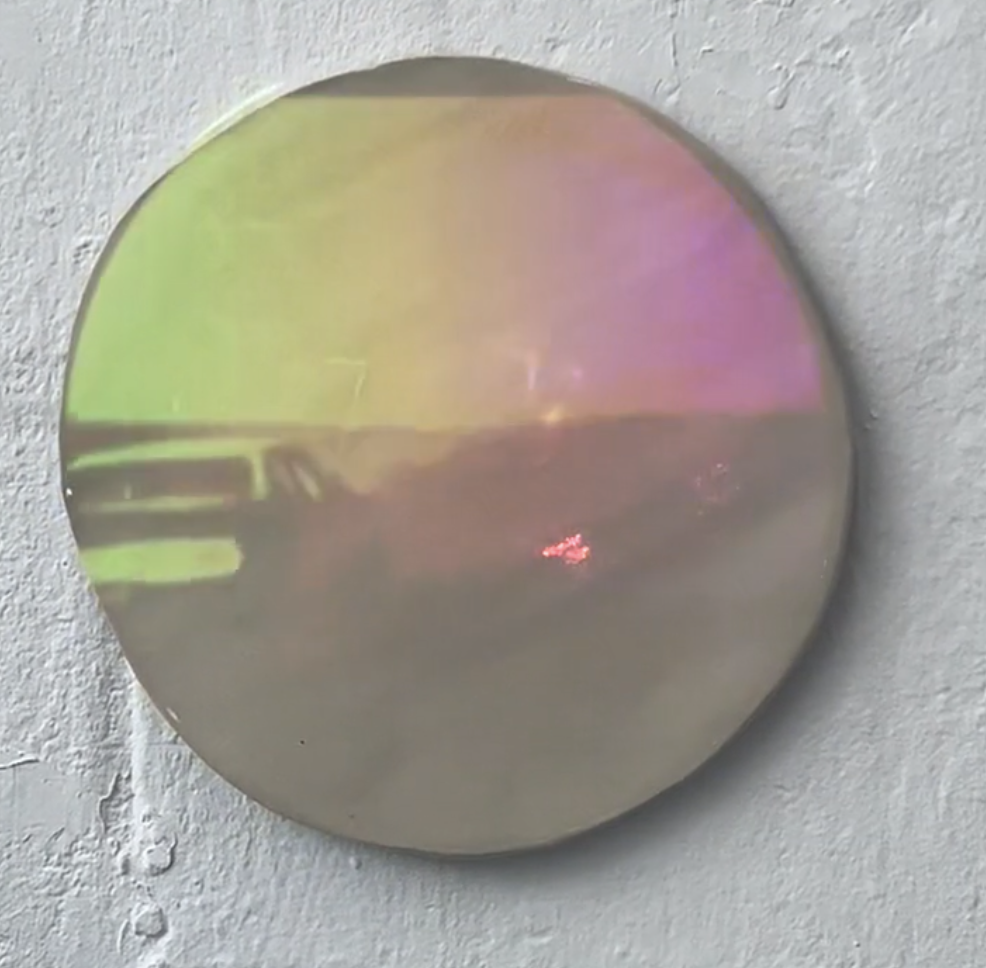
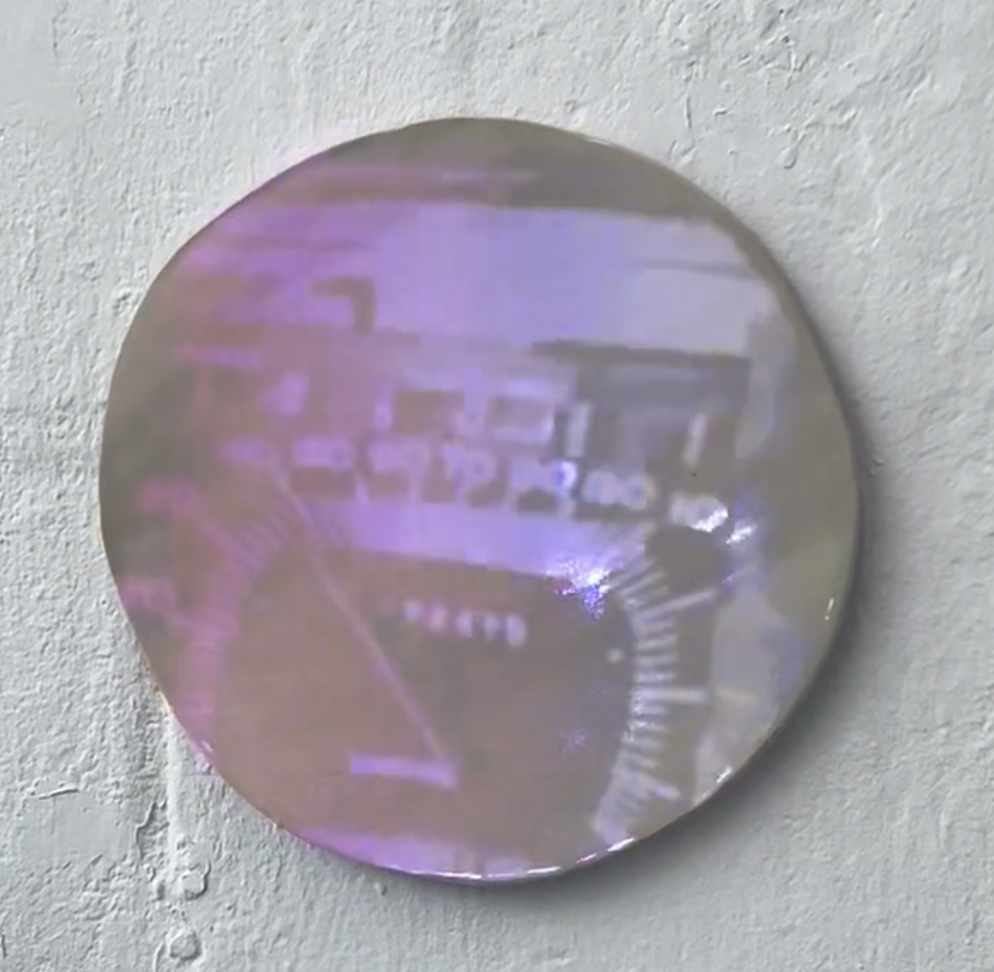

UAL COLLECTION
After the exhibition, two pieces from Set in Stone were acquired by the UAL Collection. This felt meaningful, because the work itself is about movement, transition and learning how to hold internal experiences with care. The pieces no longer sit only within my studio or personal context. They now form part of a shared collection where students, researchers and visitors can encounter them in their own time. I like that the work continues quietly, and that its meaning can shift through the different people who spend time with it.
